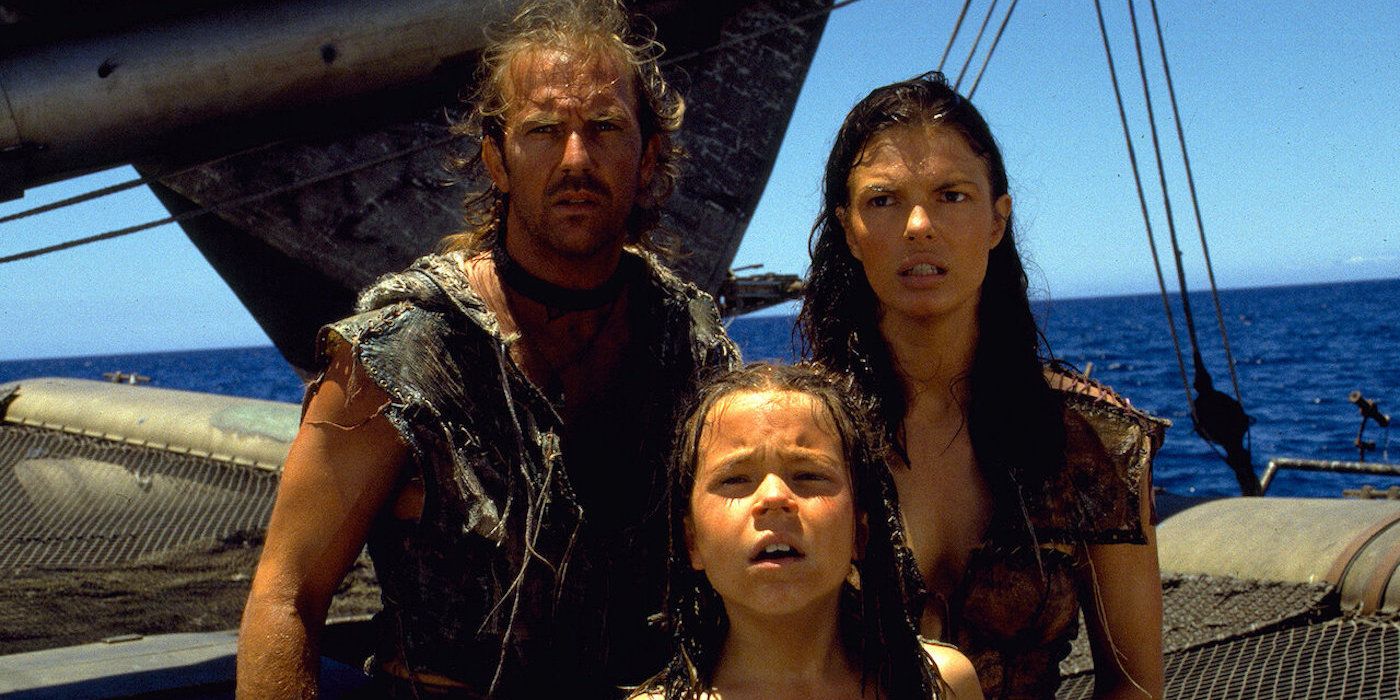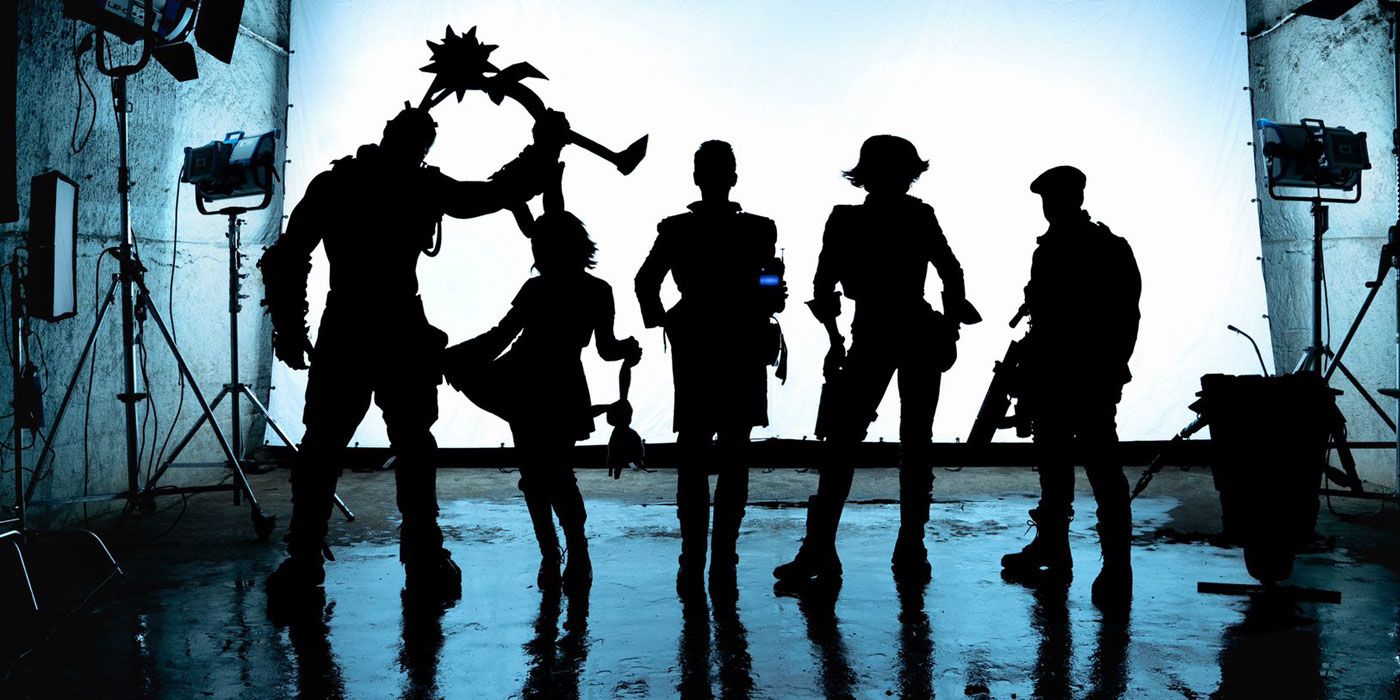The Big Picture
- The decision to film Waterworld on open waters, despite Steven Spielberg’s warning against it, led to major production complications.
- Waterworld had excessive production costs, unpredictable weather, and inflated prices from local contractors.
- On-set accidents and personal setbacks contributed to the film’s negative perception.
Here’s a joke for you: What’s big, expensive, and flops in the water? Kevin Costner‘s Waterworld. The 1995 film’s production cost was a then-record $175 million, making it the most expensive movie ever at the time, and an opening weekend take of a paltry $22 million didn’t exactly help. Waterworld was sunk before it started, with pundits calling it Fishtar, Kevin’s Gate (a humorous allusion to the colossal box office flop, Heaven’s Gate), and “the most expensive gamble in movie history.” The making of the movie is a tale riddled with debacle, woe, egregiously bad decisions, and the absence of toilets. Without further ado, the disaster behind Waterworld.
Waterworld
In a future where the polar ice-caps have melted and Earth is almost entirely submerged, a mutated mariner fights starvation and outlaw “smokers,” and reluctantly helps a woman and a young girl try to find dry land.
- Release Date
- July 28, 1995
- Director
- Kevin Reynolds, Kevin Costner
- Cast
- Kevin Costner, Chaim Girafi, Rick Aviles, R.D. Call, Zitto Kazann, Leonardo Cimino
- Rating
- PG-13
- Runtime
- 135
- Genres
- Action, Adventure, Sci-Fi, Thriller
Steven Spielberg Warned Kevin Reynolds About Filming ‘Waterworld’
According to Peter Rader, the spectacular problems behind the scenes stemmed from one bad creative decision: filming on the open waters. Says Rader, “The complications of producing this movie in a practical environment were staggering,” The decision to do so was even made after director Kevin Reynolds reached out to a relatively unknown director by the name of Steven Spielberg, whose own issues with filming the blockbuster Jaws on the open sea were legendary.
According to Rader, Reynolds made a pre-production phone call to Spielberg, saying, “Steven, I’m doing this Waterworld movie, and we’re shooting on water. Do you have any advice for me?” Spielberg did not mince words. “Do not shoot on water! You’re going to need a couple of shots on water, so use the second unit for that. Do all of your coverage in a tank or a stage.” But what does the most successful director in Hollywood history, know? Whether it was an artistic decision, or plain old hubris, Reynolds and Costner disregarded Spielberg’s words of wisdom, setting sail with Waterworld into dangerous tides.
‘Waterworld’ Blew Its Budget Out of the Water
Rader completed a first draft of a script for the film in 1989, which Lawrence Gordon‘s Largo Entertainment purchased. In 1991, the script made its way to Costner, who called Gordon to say he was interested in it. The rights to the screenplay were picked up by Universal Chairperson Thomas P. Pollock, and as part of the deal, Gordon became producer, and in turn, he brought in Costner. The first act was to hire a director, and the studio was looking for a name who had experience with large-scale projects. They had settled on Robert Zemeckis. Costner did not. Costner refused to approve of Zemeckis and insisted that Reynolds, whom he had worked with on Robin Hood: Prince of Thieves, be the director. Costner laid it out: either Reynolds was the director, or Costner was out. The studio blinked, and Reynolds was in. Waterworld was greenlit, with a budget of $100 million and a shooting schedule just north of three months… without a completed script. Others like Joss Whedon were brought in to rewrite the script, and the water complicated the shooting of the simplest of scenes, with waves pulling the boats with Reynolds and the camera crew away from the action.
It became clear that both the budget and shooting schedule were exceedingly optimistic. The schedule didn’t take into account the unpredictable weather, including a tsunami scare that halted production for half a day, the need to ferry the makeup crew to and fro, and the effects of seasickness on the crew, including director Reynolds. The budget was front-heavy, with the Mariner’s trimaran constructed at $500,000 (for one… there were two made), a floating “slave colony” and the atoll, a beastly, 1,000-ton atrocity of metal a quarter mile in circumference which created a steel shortage of steel in Hawaii, with more having to be shipped in from California, at $5 million (and no bathrooms, by the way). Additionally, local contractors took full advantage of being the only game in town and upped their prices, as per the previously cited Entertainment Weekly. And one set sunk, leading to the expense of having to salvage it to continue filming. After all was said and done, the shoot came in at 166 days and $175 million.
‘Waterworld’ Cost Costner Big Time
On-set accidents also plagued the production of Waterworld. Tina Majorino, the child actress who plays Enola, was repeatedly stung by jellyfish. An incident with an underwater cable sent one crew member to the hospital to get 20 stitches in his stomach. Norman Howell, Costner’s double, suffered a potentially fatal embolism when he returned to the surface too quickly after an underwater dive. Costner himself, while shooting a scene where he was lashed to a mast 40 feet in the air, became stuck there for 30 minutes when the wind kicked up, bashing him against the mast and relentlessly hitting him with seawater before the crew could safely get him back down.
It would be Costner who arguably took the biggest hit from the film. Yes, he had access to the luxury motorboat Universal leased for him, as well as the private pool and butler that came with his $1,800-a-day oceanfront villa, but it wasn’t all sunshine and pineapple for Costner. The personal trainer on hand to help him with the physical demands of the role was arrested, with illegal steroids confiscated from his room. He ceded 15 percent of the film’s gross receipts to keep executives from firing Reynold. Costner’s once sparkling public perception bore the brunt of the negative press, especially after his divorce from his first wife, who was awarded around $80 million in the divorce settlement. The behind-the-scenes drama of the film led to wildly speculative rumors, including one from Newsweek that reported Costner demanded that “the special effects department add ‘computer-generated hair’ to hide his balding pate.”
Waterworld crawled into theaters in July 1995 on a wave of scathing negativity and decidedly mixed reviews, riding into infamy. But was it really that disastrous? Forbes notes that despite its less-than-sterling reputation, overseas it grossed $175 million, which contributed to a respectable $266 million global box office take. Paired with home video and cable sales, the film did make a modest profit and has a stunt show in Uni. In the end, Costner survived the vitriol of the film, with a career resurgence thanks to his role as John Dutton in Yellowstone, which will air the second half of its fifth season in November 2024. But if the story of the making of Waterworld teaches us anything, it’s this: when Steven Spielberg gives you advice, take it.
Waterworld is available to rent on Amazon Prime
Watch on Amazon Prime




